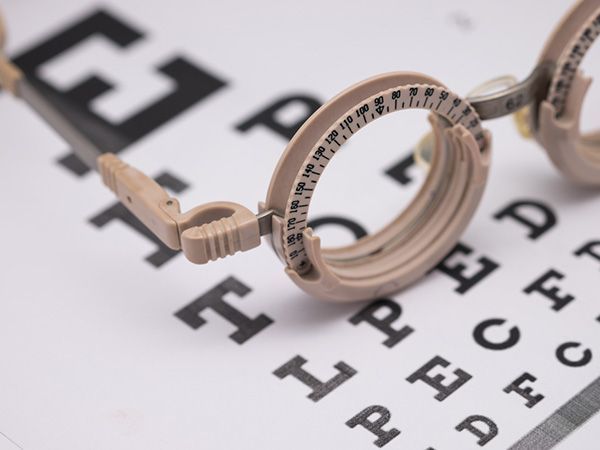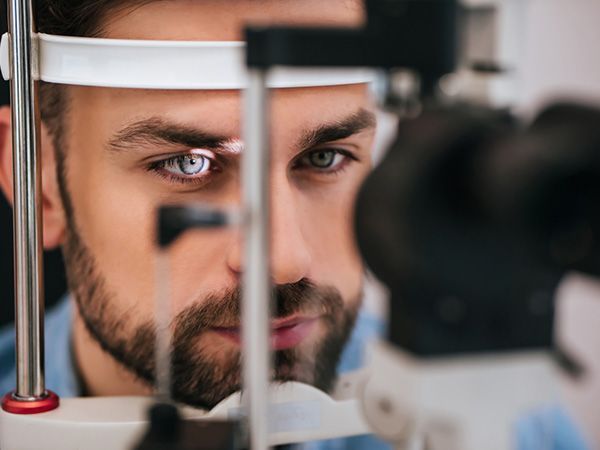Children's Eye Exam
If your child is due for a visit to the eye doctor, you may be wondering what is included in a child’s eye exam. By understanding the basics of what will happen, you can help your child overcome any anxiety associated with going. It will also help put you at ease because it is necessary for children to have regular eye exams. The eye doctor will ask about your child’s health, activities, eye problems and any other health problems. If your child is old enough, the doctor will probably talk with him or her, too. This can help your child feel more comfortable.
What eye tests will my child have?
Your child’s eye exam will include:
Vision (visual acuity) test – We test how well your child sees at different distances. If your child can read, we use the standard eye chart. If not, we use shapes or a single letter in different positions (called the “tumbling E” test). We also check your child’s depth perception.
Pupil test – We check how your child’s eyes respond to light. The doctor shines a bright light in each eye for a moment to see if the pupil reacts normally.
Eye movement test – The doctor or eye technician moves a toy or finger in different directions to check how your child’s eyes follow it. We also check your child’s side (peripheral) vision.
Retinoscopy - a test that involves shining a light into the to observe the reflection from the back of the eye (retina). This test helps determine of you child has any clouding of the lens of the eye (congenital cataract) or significant refractive error.
Refraction - The part of an eye exam that determines how well your child sees at different distances, whether the eyes need help from glasses or contacts and how strong the prescription should be.
Ophthalmoscope - The doctor uses a lighted instrument with a magnifying glass (ophthalmoscope) to look inside your child’s eyes. With the use of an ophthalmoscope, the doctor will be able to assess the overall health of the the eyes and detect any early signs of trouble.
How you can make your child’s visit more enjoyable
Share with your child your enthusiasm for the visit. Your child will expect an enjoyable experience if you set the tone for fun.
Be sure to bring any glasses – and contact lenses, if applicable – that your child wears to each visit. Also, bring a list of medications your child is taking, the names of any other doctors your child sees and a list of your child’s known medical conditions.
Make sure you bring your current insurance card, driver’s license or identification. If you are a guardian or foster parent, please bring any legal paperwork, too.
If this is your child’s first visit, make sure that your child is accompanied by a parent or legal guardian. It’s our preference that it’s always a parent or legal guardian for future visits, too. If this absolutely cannot be the case, please complete the Approval to See Minor Patients Without a Parent/Guardian Present and provide us with a phone number where you can be reached during your child’s exam.
If your child’s eyes are dilated, they’ll be sensitive to light, so bring sunglasses to wear after your visit.
Throughout the exam, parents are encouraged to ask questions. We want you to feel comfortable discussing any concerns you may have. This will also help us perform a more comprehensive eye exam on your child. After all, these eye exams are vital to your child’s development and overall health.
There’s nothing to fear during a child’s eye exam. We will make it as comfortable as possible, and educate yourself about what to expect.
Are Vision Screenings Enough?
Vision screenings at school are useful for understanding what needs to come next, but you should always consult a licensed optometrist to fully understand what is happening with your child’s vision and make plans to help correct the vision if it is needed.
Vision screenings cannot always diagnose vision conditions. In fact, according to the American Optometric Association (AOA), “Many vision conditions lack obvious signs or symptoms and can go completely unnoticed, causing delays in the detection and treatment of a potentially serious or life-limiting condition [with only vision screenings].”
An eye exam is more comprehensive than a vision screening. It’s recommended that every child should receive an eye exam in addition to the vision screening because the annual eye exam will help keep any prescriptions current and give the eye doctor a chance to check for other vision issues. So, don’t be afraid of your child’s eye exam. It’s harmless, and our optometrists will make sure that your child is cared for.




